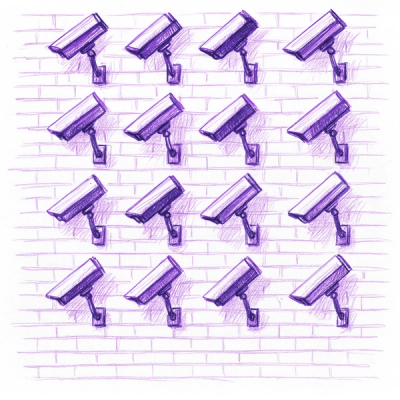Flet Model
A Model-based router for Flet applications that simplifies the creation of multi-page applications with built-in state management and navigation.
Installation
pip install flet-model
Core Features
- Model-based view architecture
- Automatic route handling and nested routes
- Event binding with caching for improved performance
- Built-in view state management
- Navigation handling (drawers, bottom bar, FAB)
- Thread-safe initialization hooks
- Support for keyboard and scroll events
- View caching system
Basic Usage
import flet as ft
from flet_model import Model, route
@route('home')
class HomeModel(Model):
vertical_alignment = ft.MainAxisAlignment.CENTER
horizontal_alignment = ft.CrossAxisAlignment.CENTER
padding = 20
spacing = 10
appbar = ft.AppBar(
title=ft.Text("Home"),
center_title=True,
bgcolor=ft.Colors.SURFACE_CONTAINER_HIGHEST
)
controls = [
ft.Text("Welcome to Home Page", size=24),
ft.ElevatedButton("Go to Profile", on_click="navigate_to_profile")
]
def navigate_to_profile(self, e):
self.page.go('/home/profile')
@route('profile')
class ProfileModel(Model):
vertical_alignment = ft.MainAxisAlignment.CENTER
horizontal_alignment = ft.CrossAxisAlignment.CENTER
padding = 20
spacing = 10
appbar = ft.AppBar(
title=ft.Text("Profile"),
center_title=True,
bgcolor=ft.Colors.SURFACE_CONTAINER_HIGHEST
)
controls = [
ft.Text("Welcome to Profile Page", size=24),
]
def main(page: ft.Page):
page.title = "Flet Model Demo"
page.go('/home')
ft.app(target=main)
Advanced Features
1. Route Data Passing
self.page.go('/products#id=123&category=electronics')
@route('products')
class ProductModel(Model):
def init(self):
product_id = self.route_data.get('id')
category = self.route_data.get('category')
2. Navigation Drawers
@route('drawer-demo')
class DrawerModel(Model):
drawer = ft.NavigationDrawer(
controls=[
ft.NavigationDrawerDestination(
icon=ft.Icons.HOME,
label="Home",
selected_icon=ft.Icons.HOME_OUTLINED
)
]
)
end_drawer = ft.NavigationDrawer(
controls=[
ft.NavigationDrawerDestination(
icon=ft.Icons.SETTINGS,
label="Settings"
)
]
)
controls = [
ft.ElevatedButton('Open Drawer', on_click=lambda e: e.control.page.open(e.control.data), data=drawer),
ft.ElevatedButton('Open End Drawer', on_click=lambda e: e.control.page.open(e.control.data), data=end_drawer)
]
3. Event Handlers and Lifecycle Hooks
@route('events')
class EventModel(Model):
def init(self):
self.load_data()
def post_init(self):
self.setup_listeners()
def on_keyboard_event(self, e: ft.KeyboardEvent):
if e.key == "Enter":
self.handle_enter()
def on_scroll(self, e: ft.OnScrollEvent):
if e.pixels >= e.max_scroll_extent - 100:
self.load_more_data()
4. Floating Action Button
@route('fab-demo')
class FABModel(Model):
floating_action_button = ft.FloatingActionButton(
icon=ft.Icons.ADD,
on_click="add_item"
)
floating_action_button_location = ft.FloatingActionButtonLocation.END_DOCKED
5. Bottom Navigation
@route('navigation')
class NavigationModel(Model):
navigation_bar = ft.NavigationBar(
destinations=[
ft.NavigationDestination(icon=ft.Icons.HOME, label="Home"),
ft.NavigationDestination(icon=ft.Icons.PERSON, label="Profile")
],
on_change="handle_navigation"
)
6. Overlay Controls
@route('overlay')
class OverlayModel(Model):
overlay_controls = [
ft.Banner(
open=True,
content=ft.Text("Important message!"),
actions=[
ft.TextButton("Dismiss", on_click="dismiss_banner")
]
)
]
def dismiss_banner(self, e):
self.page.close(e.control.parent)
7. Fullscreen Dialogs
@route('dialog')
class DialogModel(Model):
fullscreen_dialog = True
controls = [
ft.Text("Dialog Content"),
ft.ElevatedButton("Close", on_click="close_dialog")
]
def close_dialog(self, e):
self.page.views.pop()
self.page.go(self.page.views[-1].route)
Real-world Example
Here's a complete example of a todo application using Flet Model:
import flet as ft
from flet_model import Model, route
from typing import List
class TodoItem:
def __init__(self, title: str, completed: bool = False):
self.title = title
self.completed = completed
@route('todo')
class TodoModel(Model):
todos: List[TodoItem] = []
appbar = ft.AppBar(
title=ft.Text("Todo List"),
center_title=True
)
def get_controls(self):
return [
ft.TextField(
hint_text="Add new todo",
on_submit="add_todo",
autofocus=True
),
ft.Column(controls=self.get_todo_control())
]
def get_todo_control(self):
return [
ft.Checkbox(
label=todo.title,
value=todo.completed,
on_change=lambda e, t=todo: self.toggle_todo(e, t)
) for todo in self.todos
]
controls = [
ft.TextField(
hint_text="Add new todo",
on_submit="add_todo",
autofocus=True
),
ft.Column()
]
def add_todo(self, e):
if e.control.value:
self.todos.append(TodoItem(e.control.value))
e.control.value = ""
self.controls[-1].controls = self.get_todo_control()
self.update()
e.control.focus()
def toggle_todo(self, e, todo):
todo.completed = e.control.value
self.update()
def main(page: ft.Page):
page.go('todo')
ft.app(target=main)
Contributing
Contributions are welcome! Please feel free to submit a Pull Request.
License
This project is licensed under the MIT License.



